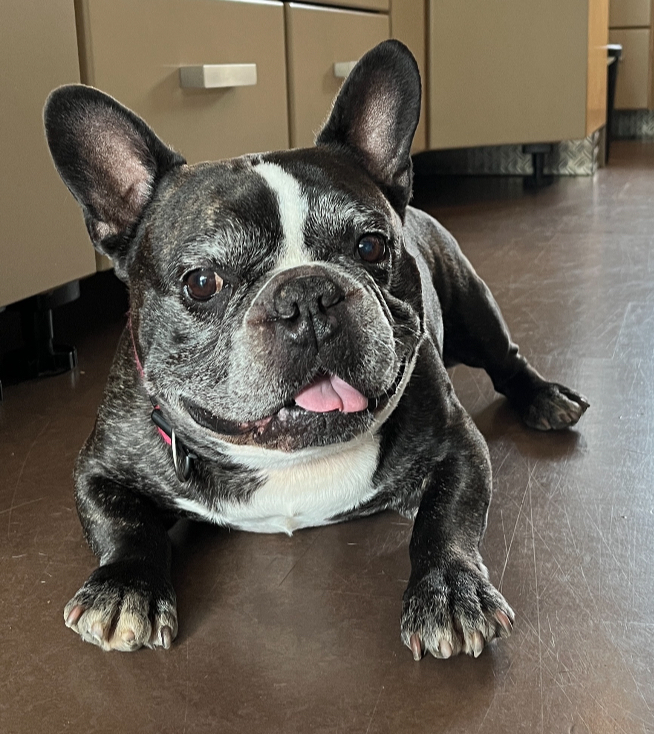Animal communication dog (dogs)

Your key to truly understanding your four-legged friend
You love your four-legged friend more than anything, but sometimes you just don’t understand what’s going on inside them. Why do they suddenly bark for no apparent reason? Why do they seem fearful even though there is nothing threatening in their environment? Why do they react aggressively to certain people or other dogs even though they are usually so peaceful?
Maybe you’ve tried everything: dog trainers, behavior books, treats as rewards. But the problem is still there. You ask yourself, “What am I missing? Why can’t I understand my own dog and help him?”
This is where animal communication comes in. It allows you to see the world through your dog’s eyes and finally understand what he has been trying to tell you for so long.
What is animal communication and why does it work with dogs?
Animal communication is an intuitive method of connecting with animals on a deeper level. Unlike traditional dog training, it is not about commands or discipline, but about perceiving and understanding your dog’s thoughts, feelings, and needs.
Dogs are particularly receptive to this type of communication because they are highly sensitive creatures themselves. They sense your moods, react to energies, and perceive much more than we often realize. But because they cannot respond with spoken words, many of their messages go unheard. Until now.
When can animal communication help?
Perhaps you are still unsure whether animal communication is right for you. Many dog owners have reservations at first, until they experience how profound the results can be. Here are some situations in which animal communication can offer a solution:
1. Your dog exhibits inexplicable behavior
- He barks, growls, or whines for no apparent reason
- He destroys objects when he is alone
- He suddenly reacts fearfully or aggressively to certain people, places, or noises
What animal communication can do here:
Through contact with your four-legged friend, you will learn what is really behind his behavior. Perhaps he associates a certain noise with a bad experience. Perhaps he feels threatened by a certain person without you realizing why. Once you know the trigger, you can work on it specifically.
2. Your dog seems unhappy or stressed, but you don’t know why
- He withdraws, seems apathetic or listless
- He sleeps restlessly or shows signs of nervousness
- He eats poorly or licks certain parts of his body excessively
What animal communication can do here:
Dogs often hide physical or emotional pain because they don’t want to burden us. Through animal communication, we can find out whether your furry friend is suffering from stress, whether he is in pain, or whether an unprocessed experience is weighing on him.
3. Your dog has a difficult past
- He was rescued from an animal shelter and still shows signs of insecurity
- He has had bad experiences with humans or other animals
- He reacts with panic in certain situations (e.g., at the vet, during thunderstorms)
What animal communication can do here:
Many furry friends carry emotional scars from their past. Through animal communication, you can find out exactly what happened to him and help him process these experiences in a targeted manner. For example, with the help of surrogate work. This can be done through surrogate hypnosis or surrogate work using quantum work .
4. You are facing a big change and want to prepare your dog for it
- A move is coming up
- A new family member (baby, another dog) is moving in
- You have to temporarily place your dog in someone else’s care
What animal communication can do here:
Dogs understand our words and sense changes. Through animal communication, you can explain to them what is going to happen and thus give them a sense of security.
5. Your dog is old or sick and you want to know how he is really doing
- He suffers from a chronic illness
- You are considering when the right time to say goodbye is
- You want to make sure he is not in pain
What animal communication can do here:
In this emotional phase, animal communication helps you to better understand your dog’s needs. Many dogs communicate whether they are ready to go or whether they still feel joy in life.
What is the animal communication process?
You may be wondering, “Sounds good, but how does it work exactly? Does my dog have to be there?”
- Preliminary discussion with you
– You describe your questions and concerns to me - Contacting your furry friend
– I connect with your dog telepathically. This is done using a photo (you can read about what the photo should ideally look like under Requirements for animal communication)
– Your dog does not need to be present - Receiving the messages
– I perceive feelings, images, or words that your dog sends me
– Sometimes these are concrete statements (e.g., “I don’t like the smell of the new cleaning product”), sometimes more emotional impressions (“I feel lonely when you’re away all day”), or simply images or moving images (such as a GIF or a video) - Feedback to you
– I pass on all the information to you in form of a written transcript of the conversation, for example
Common concerns and why they are unfounded
- “That sounds esoteric. Can it really work?”
Animal communication is not magic, but an intuitive ability that every human being possesses. Similar to intuition or gut feeling. Many dog owners report amazing results after understanding their dog’s perspective. - “My dog is stubborn! Will he even cooperate?”
Dogs want to be understood. They are often relieved when someone finally hears their messages. Even “stubborn” dogs usually open up as soon as they sense that it is about genuine communication and not obedience. - “I’ve tried so many things… Why should this help?”
Conventional methods often focus on the dog’s behavior. Animal communication goes one step further: it reveals the origin of the behavior. When you understand why your dog acts the way it does, you can tackle the problem at its root.
Reviews from satisfied owners
I booked Ms. Lang for an animal communication session.
The client receives the result in writing, preliminary talks were very informative. The assignment (questions for the animal) is determined in advance, so that I as the client also have the opportunity to address specific issues. I find that very good.
At the results meeting, Ms. Lang explains the protocol and it is very informative. Any queries are explained very well and clearly.
I hope to be able to help my cat better with the information and will let the animal communication work on us.
Thank you for your work and the trust you have placed in us.
Andrea Kurth
Satisfied dog owner

For me, the basis of trust is very important for the success of a consultation and the success of such an approach. This was absolutely successful! Empathy and individual appreciation in the joint session were outstanding.
I can highly recommend Larissa.
Markus und Gisela Sieber
Satisfied clients

Your next step
If you are ready to get to know your dog on a whole new level, book an animal communication session now. Whether you are looking for answers to a specific problem or simply want to deepen your bond with your dog, I will accompany you and your four-legged friend with empathy and professionalism.
You are not alone with your questions. Many dog owners were skeptical at first and are now grateful that they took this path. Your dog is waiting for you to finally understand him.
I look forward to conveying your animal’s messages to you.
Note:
Animal communication and / or surrogate work are not a substitute for veterinary treatment.
However, after consultation with the practitioner, animal communication and / or surrogate work can be used as a supportive measure.

